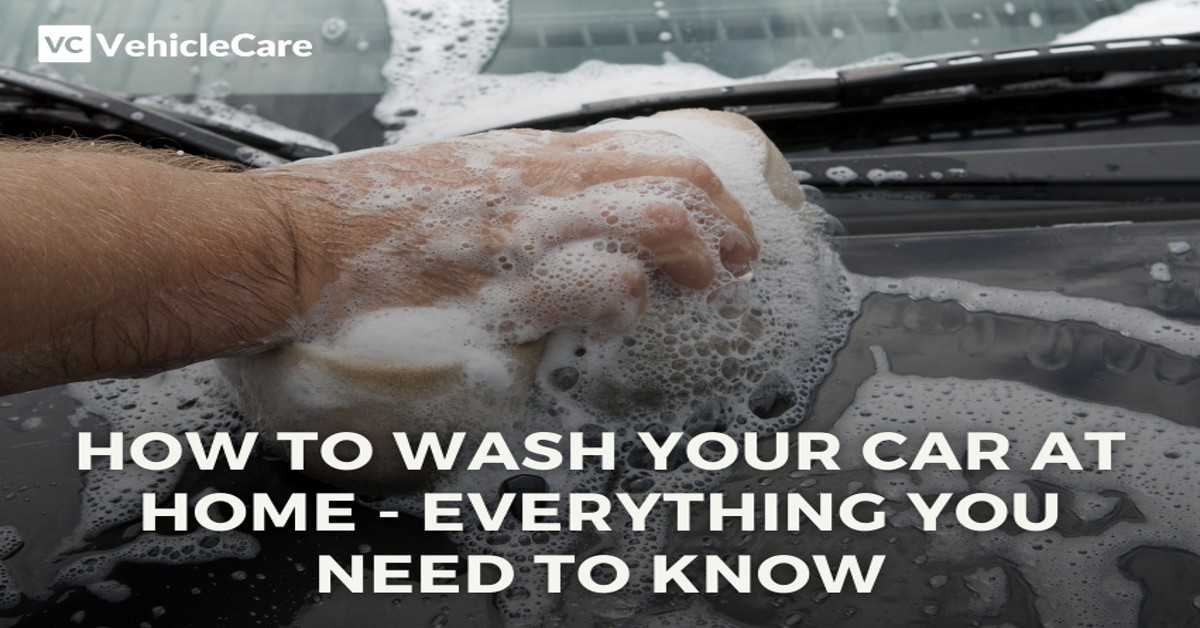A dirty car is an eyesore, but it also can be costly to take your car in for professional detailing. It’s a good idea to wash your car at home no matter the condition of your paint job. Washing your car at home is not as difficult as it may seem. However, there are certain guidelines you will have to follow in order to ensure the best results. This article will help you take care of your car and keep it looking like new without spending a fortune on professional detailing services every few months.
Table of Contents
What Should I Use?
There are two basic materials you can use for washing your car—soap and wax. Soap is generally more affordable, though it can damage paintwork if not used carefully; wax tends to offer longer-lasting protection, but costs considerably more than soap. When choosing a soap or car wax, look for one that’s intended for automotive applications rather than general household purposes; these products tend to contain less harsh chemicals and strip fewer of your car’s protective coatings.
Choose The Right Time
When you wash your car, you’ll want to choose a time that’s right for you. Different seasons offer specific benefits. If you live in a place where it rains, summer might be your best bet. Keep in mind that rain washes away road dirt and pollutants, making them easier to get off when you’re cleaning your car later on.
Keep Safety In Mind
It’s best to do all of your car washing on a dry day when you can better see where your car is going. Avoid washing in direct sunlight and take extra care when rinsing. Keep children, pets, and other people away from your car while it’s wet. If you are using a high-pressure hose, check to make sure that there are no gas or water lines under or near your driveway where you will be working.
Wash The Wheels First
Wheels are typically some of a car’s dirtiest parts, which is why you should start washing your car from there. Use an old toothbrush or other small brush to scrub behind each wheel. Make sure to use plenty of water and soap on these surfaces in order to remove any dirt or grime that’s stuck in crevices. Depending on how dirty your wheels are, you may want to use a separate brush for each one—and just move up as they become cleaner.
Use Enough Water But Not Too Much
When washing your car, you don’t want to skimp on water, but using too much can actually be bad for your paint job. If your wash mitt or sponge is dirty after rinsing it off, you’re using too much water. The right amount of suds should be just enough that your mitt or sponge looks clean after you rinse it off with a hose.
Brush Out Dirt Before Washing
It might sound counterintuitive, but never wash your car until you’ve removed any large chunks of dirt. Dirt not only gets embedded in your car’s surface, but it also makes it much more difficult for washing products to get their job done. The less dirt there is on your car, the easier it will be to keep clean! So make sure you brush off any dirt before washing; an old toothbrush works well if you don’t have anything else on hand.
Foam Away Stubborn Grime And Debris
When you wash your car by hand, it’s vital that you clean your car with a gentle touch. Aggressive scrubbing will only cause problems because all of that scratching can end up ruining your paint job or leaving scratches in its place. Foam brushes are gentler than bristled brushes and help you avoid damaging your vehicle’s finish. With a little bit of soap and water, they will dissolve dirt and grime easily, which means you won’t have to spend as much time washing your car when using a foam brush versus using other types of scrubbers and tools. Soft, flexible bristles are safe for all surfaces, too!
Rinse Thoroughly
Rinse your car off with fresh water after you’ve washed it, and be sure to clean off any soap residue. Then go over each section of your car with a dry microfiber towel, following up by buffing it dry. This step is important: You don’t want wet spots marring your finish. Be sure that you apply enough pressure when drying; otherwise, streaks can form.
Dry With A Microfiber Cloth Or Chamois
Use a dry microfiber cloth or chamois to wipe down your car after you wash it. It’s best to avoid using any sort of paper towels or old rags, as they can leave behind small fibers that will scratch your paint job. Microfiber cloths are specially woven and designed not to scratch, so they’re ideal for use on your car.
Final Words
Your car is a big investment, and you want to make sure it’s protected. By learning how to wash your car at home, you can save money on car washes and still keep your vehicle looking great. If you need help with washing your car or just want some tips to get the job done right, check out our VehicleCare for more information today!


